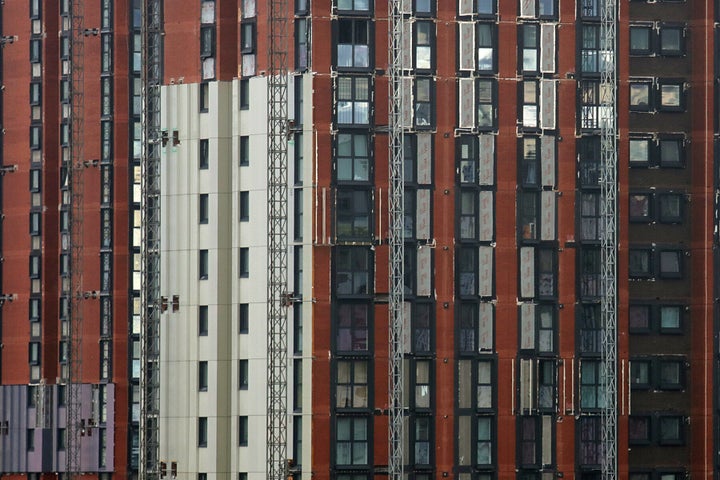
Less than £1.5m of £200m allocated to remove dangerous cladding from high-rise buildings in the private sector has been handed out, a damning report by the UK’s spending watchdog has revealed.
An analysis by the independent National Audit Office (NAO) has found that government plans have “lagged behind (their) own expectations” when it comes to stripping tall buildings of the same flammable cladding that covered Grenfell Tower.
As HuffPost UK reported last week, 300 buildings are still undergoing work to remove aluminium composite material (ACM) cladding - three years after the west London tower block fire.
Ministers aimed to complete the remediation of all buildings by this month, but the target has now been moved to mid-2022. The coronavirus pandemic, which has halted work on 60% of at risk buildings, is likely to cause further delays.
In its report, the NAO revealed the glacial progress of getting work carried out on privately-owned buildings, which has been blighted by difficulties in identifying who is responsible.
By the end of April 2020, the Department for Ministry of Housing, Communities and Local Government had paid out £1.42 million (0.7%) from the £200m private sector fund. By comparison, £133 million (33.3%) from the £400 million social sector fund had been allocated.
Officials at the MHCLG identified a total of 455 buildings over 18m tall covered in ACM. In total, 155 of these buildings have had all of the ACM cladding removed, and 300 are still undergoing work to be cleared of the material. Removal work has not yet begun on 160 of these high-rises.
The NAO noted that work has been particularly slow on private sector buildings, of which only 14% of the 207 identified have had the cladding fully removed by May 2020.
This compared with 68.5% of the 54 student accommodation blocks and 48.7% of the 154 social housing buildings which had been fully remediated by the same point.
Gareth Davies, head of the NAO, said: “MHCLG has made progress in overseeing the removal of dangerous cladding from many buildings, particularly in the social housing sector.
“However, the pace of progress has lagged behind its own expectations, particularly in the private residential sector.
“It has a long way to go to make all high-rise buildings safe for residents.”
He added: “Going forward it is important that the department successfully manages the administrative challenges of funding building owners to carry out remediation work, particularly given its intention to commit a further £1 billion in full by the end of March 2021.”
In total, the government has committed £1.6bn to carry out work on all affected buildings because of the stalemate between the state, building owners and developers over who should pay for remediation. But the long delays are causing misery for people living in tens of thousands of homes affected by the scandal.
Last week, a parliamentary committee warned fixing all serious fire safety defects in high-risk residential buildings could cost up to £15 billion.
In addition to the buildings covered in ACM, another 1,700 are thought to have cladding which could potentially be unsafe.
The flames which rapidly engulfed the 24-storey Grenfell Tower in June 2017 were fuelled by its ACM, which had a polyethylene core, the inquiry into the disaster has previously heard.
The cladding system had a heat combustion akin to diesel and close to lighter fluid, the hearing was told.
Last month, HuffPost UK reported that the government cash does not cover the temporary fire safety measures those in dangerous buildings have been forced to implement just to stay in their homes.
The most common measure is 24-hour fire wardens, or round-the-clock waking watches. Freedom of Information requests showed at least 380 blocks of flats have watches in place, costing some people as much as £840 a month. HuffPost UK also revealed how thousands are facing “astronomical” hikes to insurance premiums.
An MHCLG spokesman said: “We are clear that building owners must keep their residents safe and we are providing them with unprecedented support to do so.
“The Government has provided £1.6 billion to ensure unsafe ACM and non-ACM cladding is removed swiftly from high-rise buildings, and is bringing forward the biggest change in building safety in a generation.
“We have made progress with the removal and replacement of ACM cladding, but it is clear there is much more still to be done and building owners have a legal responsibility to ensure their building is safe.”
